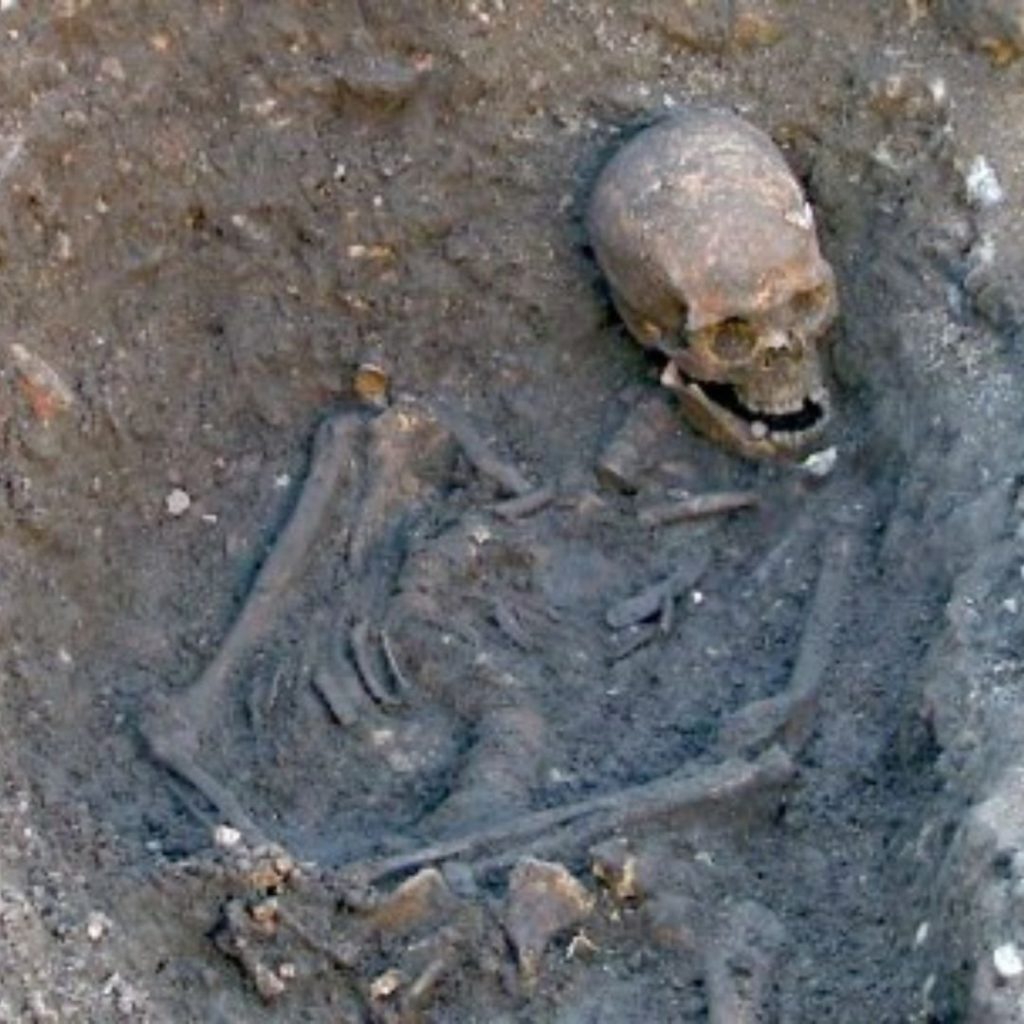In 2012, Phillipa Langley accomplished what had long been deemed an insurmountable challenge by historians: she unearthed the long-lost grave of King Richard III, hidden beneath a car park in Leicester. This extraordinary discovery unraveled a centuries-old enigma surrounding the last English monarch to perish in battle and shed new light on a controversial figure whose legacy had been obscured by myth and propaganda.

The journey to finding Richard III’s remains was a combination of historical research, determination, and groundbreaking science. The search for the king’s final resting place began decades earlier, with growing interest from historians and the Richard III Society. For years, historians speculated about the burial site of the infamous king. In 1975, an article suggested that Richard’s remains might lie beneath a municipal car park managed by the Leicester City Council. Despite the compelling theory, the idea remained unproven for decades, leaving the exact location of the monarch’s grave a mystery.
The breakthrough came in August 2012 when the Looking for Richard project initiated an archaeological dig. This effort, spearheaded by Phillipa Langley and supported by a team of archaeologists, historians, and scientists, aimed to determine whether the king’s final resting place could finally be uncovered. Almost immediately, the excavation yielded astonishing results. On the very first day of digging, archaeologists uncovered a human skeleton. The remains presented features so distinct that they raised the possibility of being the long-lost king.
The skeleton displayed severe scoliosis, a condition marked by an abnormal curvature of the spine, which aligned with historical descriptions of Richard III. In addition, multiple injuries consistent with wounds sustained in battle were observed. These included significant damage to the skull caused by bladed weapons, suggesting a violent death on the battlefield. The age of the skeleton also matched Richard III at the time of his death, lending further weight to the possibility that the remains were those of the ill-fated king.
However, identifying the remains required more than circumstantial evidence. The scientific community embarked on rigorous testing to confirm their suspicions. Initial DNA testing provided a breakthrough. By comparing the DNA extracted from the skeleton to known living descendants of Richard III’s sister, Anne of York, scientists established a genetic link. The osteological analysis further supported the identification, verifying that the skeleton’s physical characteristics were consistent with historical accounts of Richard III’s appearance and medical condition. Forensic analysis also revealed the fatal injuries the king had sustained during the Battle of Bosworth Field in 1485, including devastating wounds to the skull and body that matched contemporary accounts of his death.
The discovery of Richard III’s remains marked a significant historical and archaeological milestone, as it solved one of England’s most enduring mysteries. Richard’s death and burial had long been shrouded in uncertainty. After his defeat at the Battle of Bosworth Field, where he became the last English king to die in combat, his body was reportedly brought to Leicester. It was buried at Greyfriars friary, but the dissolution of the monasteries under King Henry VIII led to the destruction of the friary, and its location was lost over time. For centuries, Richard III’s burial site faded into obscurity, with many assuming it would never be found.
The rediscovery of his grave not only resolved the mystery of his final resting place but also reignited interest in the historical significance of his reign. Richard III was a monarch whose reputation had been marred by centuries of negative portrayals, largely fueled by Tudor-era propaganda, including Shakespeare’s infamous depiction of him as a villainous, power-hungry figure. The discovery of his remains allowed historians to reexamine his legacy with fresh perspectives, unearthing new insights into his life and reign.
Richard III’s reign, though brief, included notable achievements. He was the first English monarch to have laws written entirely in English, marking a significant moment in the evolution of legal and political language. He also attempted to reconcile the Yorkists and Lancastrians, the two rival factions embroiled in the Wars of the Roses, in an effort to bring stability to a divided kingdom. Additionally, he successfully negotiated a truce with Scotland, showcasing his diplomatic skills.
After the identification of his remains was confirmed, the question arose of how best to honor and rebury the last Plantagenet king. A decision was made to inter Richard III’s remains in Leicester Cathedral, not far from where he was originally buried. On March 26, 2015, a solemn and dignified reinterment ceremony took place, drawing global attention. The event, which was broadcast live, was attended by dignitaries, historians, and members of the public, all gathered to pay their respects to a monarch whose story had captivated the world. His new tomb, located in the cathedral, has since become a popular destination for visitors, serving as both a historical landmark and a tribute to one of England’s most enigmatic rulers.
The rediscovery of Richard III’s grave has had a profound impact on both archaeology and historical scholarship. It demonstrated the power of modern technology, science, and interdisciplinary collaboration in solving historical mysteries. Beyond its academic significance, the find also offered an opportunity to humanize a figure often reduced to caricature. By uncovering the reality of Richard III’s life and death, the discovery allowed for a more nuanced understanding of the man behind the myths.
Today, the story of Richard III’s rediscovery continues to inspire and fascinate. His tomb stands as a testament to the enduring power of historical inquiry and the remarkable ability of archaeology to bring the past to life. For those who visit Leicester Cathedral, the site offers a chance to reflect on the legacy of a king whose life, death, and rediscovery have left an indelible mark on history.





